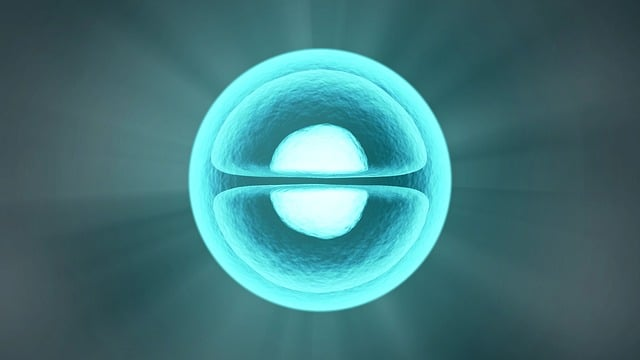Research instrumentation and reagents are constantly evolving, driven by emerging technologies and the quest for innovation. This article will explore the global market for research instrumentation and reagents and discuss the latest trends, technological advancements, and overall market growth. We will also delve into the role of these advancements in supporting various sectors, including pharmaceutical companies and molecular diagnostics, as well as the challenges posed by intense competition and the rising prevalence of infectious diseases. A detailed analysis will uncover the impact of these new technologies and advancements in research instrumentation and reagents on the market landscape and the opportunities they present for researchers and industry players. So, let's delve into the exciting world of research instrumentation and reagents and discover their transformative potential.

Global Market:
The global market for research instrumentation and reagents is experiencing substantial growth, driven by the increasing demand for advanced tools and solutions in the scientific community. This market encompasses various instruments, including analytical instruments, imaging systems, chromatography systems, and more. Furthermore, the reagents market provides chemical components for different research applications.
Market Trends:
One of the prominent trends in the market is the integration of advanced technologies into research instrumentation. Emerging technologies such as artificial intelligence (AI), automation, and robotics are revolutionizing experiments, enabling faster and more accurate results. Additionally, there is a growing focus on miniaturization and portability of instruments, allowing researchers to perform analyses in more diverse settings.
Technological Advancements:
Rapid technological advancements fuel innovation in research instrumentation and reagents. For instance, in molecular diagnostics, cutting-edge techniques like next-generation sequencing and PCR-based assays have transformed the field, enabling precise and efficient analysis of genetic material. These advancements have opened up new possibilities for understanding diseases and developing targeted therapies.
Market Growth:
The research instrumentation and reagents market is witnessing significant growth, driven by several factors. The increasing adoption of personalized medicine and the rising investment in drug discovery and development fuel the demand for advanced research tools. Moreover, the prevalence of infectious diseases, such as the recent global pandemic, has further emphasized the need for robust research instrumentation and reagents to enable rapid and accurate diagnostics.
Introduction To New Technologies In Research Instrumentation:
In recent years, significant advancements in research instrumentation have revolutionized the scientific landscape, enabling scientists to delve deeper into the natural world's mysteries. These cutting-edge technologies have enhanced research efficiency and elevated the quality and accuracy of data obtained. Some remarkable new research instrumentation technologies include high-resolution imaging techniques, advanced spectroscopic tools, novel sensing devices, and the integration of automation and robotics in research laboratories.
High-Resolution Imaging Techniques:
High-resolution imaging techniques, such as super-resolution microscopy, have transcended the limitations of conventional microscopy. These techniques surpass the diffraction barrier, enabling scientists to visualize cellular structures and molecular interactions with unprecedented detail.
Super-resolution microscopy techniques, including structured illumination microscopy, stimulated emission depletion microscopy, and single-molecule localization microscopy, have opened up new avenues for studying complex biological processes at the nano-scale level. These techniques have revolutionized fields like cell biology, neurobiology, and materials science by providing enhanced resolution and spatial information.
Advanced Spectroscopic Tools:
Spectroscopy plays a vital role in understanding materials' chemical composition, structure, and dynamics. Advanced spectroscopic tools, such as mass spectrometer (MS) and nuclear magnetic resonance (NMR) spectroscopy, have advanced remarkably. Mass spectrometer enables precise identification and quantification of molecules, offering insights into proteomics, metabolomics, and drug discovery.
NMR spectroscopy provides detailed structural information about molecules, elucidating their three-dimensional arrangements and inter-molecular interactions. These sophisticated spectroscopic techniques have become indispensable in various scientific fields, including chemistry, biochemistry, and pharmaceutical research.
Novel Sensing Devices:
The development of novel sensing devices, such as biosensors and nanosensors, has expanded the possibilities of real-time monitoring and analysis. Biosensors integrate biological components, such as enzymes or antibodies, with transducers to detect and quantify specific analyses. These devices find applications in environmental monitoring, medical diagnostics, and food safety.
On the other hand, nanosensors leverage nanotechnology to detect and measure minute changes in physical or chemical properties. Their high sensitivity and selectivity make them valuable tools in environmental monitoring, healthcare, and molecular biology.
Automation And Robotics In Research Laboratories:
Automation and robotics have gained prominence in research laboratories, streamlining experiments and data acquisition processes. Automated liquid handling systems, robotic sample preparation, and high-throughput screening platforms have significantly increased research productivity. These technologies minimize human error, enhance reproducibility, and accelerate data generation. By enabling the handling of large sample volumes and high numbers of replicates, automation, and robotics have expedited research in areas such as drug discovery, genomics, and high-throughput analysis.
Market Share And Intense Competition:
The market for new technologies and advancements in research instrumentation and reagents has witnessed significant growth and intense competition in recent years. Additionally, several market players have entered the industry, driven by the increasing demand for innovative tools and solutions in scientific research.
During the past few years, there has been a surge in the adoption of new research instrumentation and reagent technologies. This growth can be attributed to advancements in technology, increased investment in research and development, and the rising demand for accurate and reliable scientific data. As a result, market players have seized these opportunities by introducing innovative products and services to cater to the evolving needs of researchers.
However, with the increasing competition in the market, companies are striving to differentiate themselves by offering unique and superior solutions. They focus on developing advanced research instruments and reagents that provide higher precision, sensitivity, and efficiency. Additionally, companies invest in research and development to stay ahead of the competition and bring innovative technologies to the market.
As the market continues to evolve, market players are vying for a larger market share and a competitive edge. They focus on strategic collaborations, partnerships, and mergers and acquisitions to expand their product portfolios and reach a wider customer base. Moreover, companies are investing in marketing and promotional activities to create awareness about their advanced technologies and gain a competitive advantage.
Looking ahead, the forecast period presents immense growth opportunities for market players in the new technologies and advancements in the research instrumentation and reagents market. The increasing demand for innovative solutions and continuous technological advances are expected to drive the market's growth. However, the intense competition among market players is likely to persist, driving them to constantly innovate and improve their offerings to meet the evolving needs of researchers.
Conclusion
The research instrumentation and reagents market is experiencing rapid growth and technological advancements. Emerging technologies, detailed analysis, and the expanding market share drive innovative tools and solutions development. This dynamic landscape presents immense opportunities for researchers, pharmaceutical companies, and other industry players to advance scientific knowledge and address the challenges of infectious diseases.
By harnessing these new technologies and advancements, we can unlock breakthrough discoveries and pave the way for a brighter future in scientific research.

